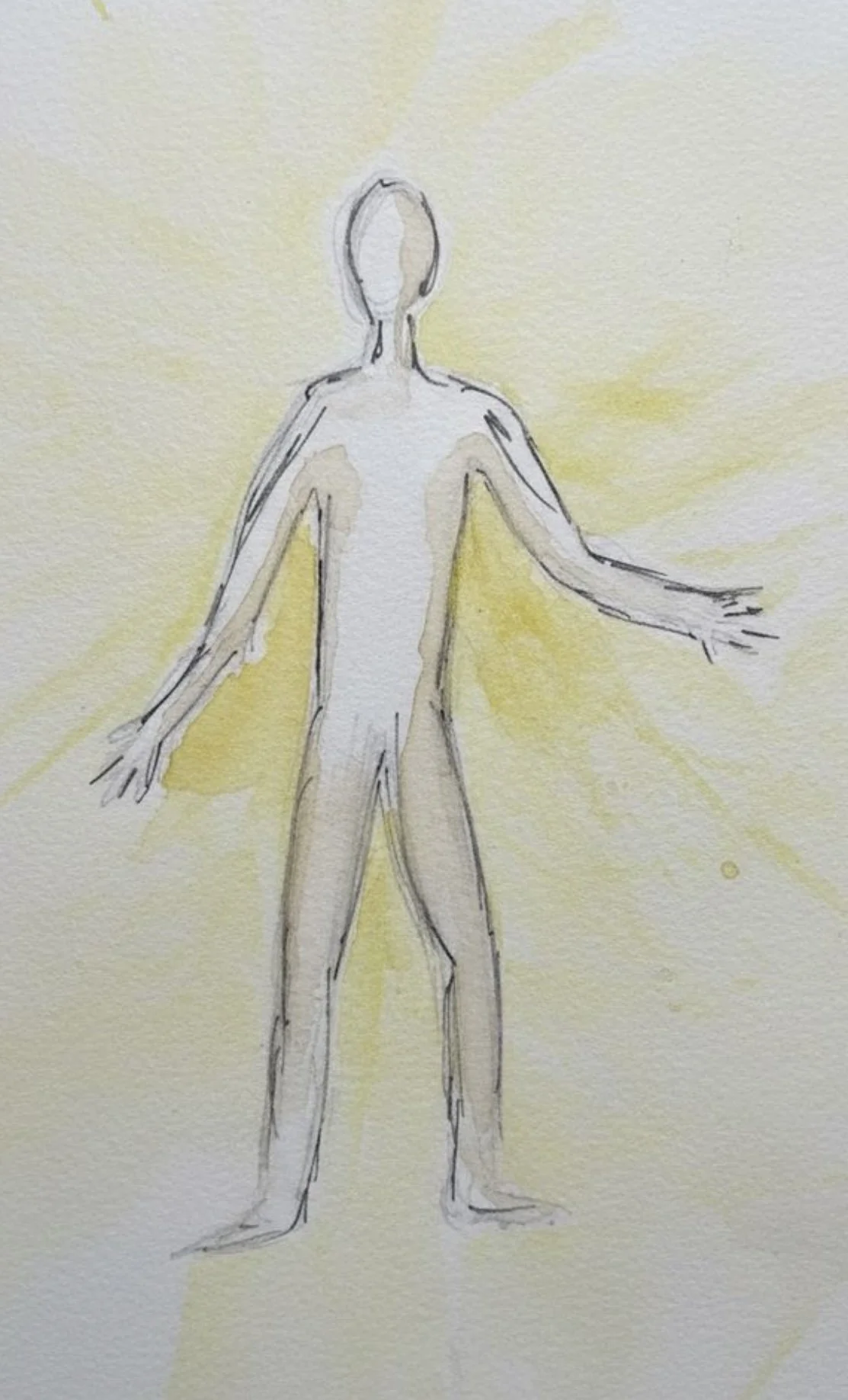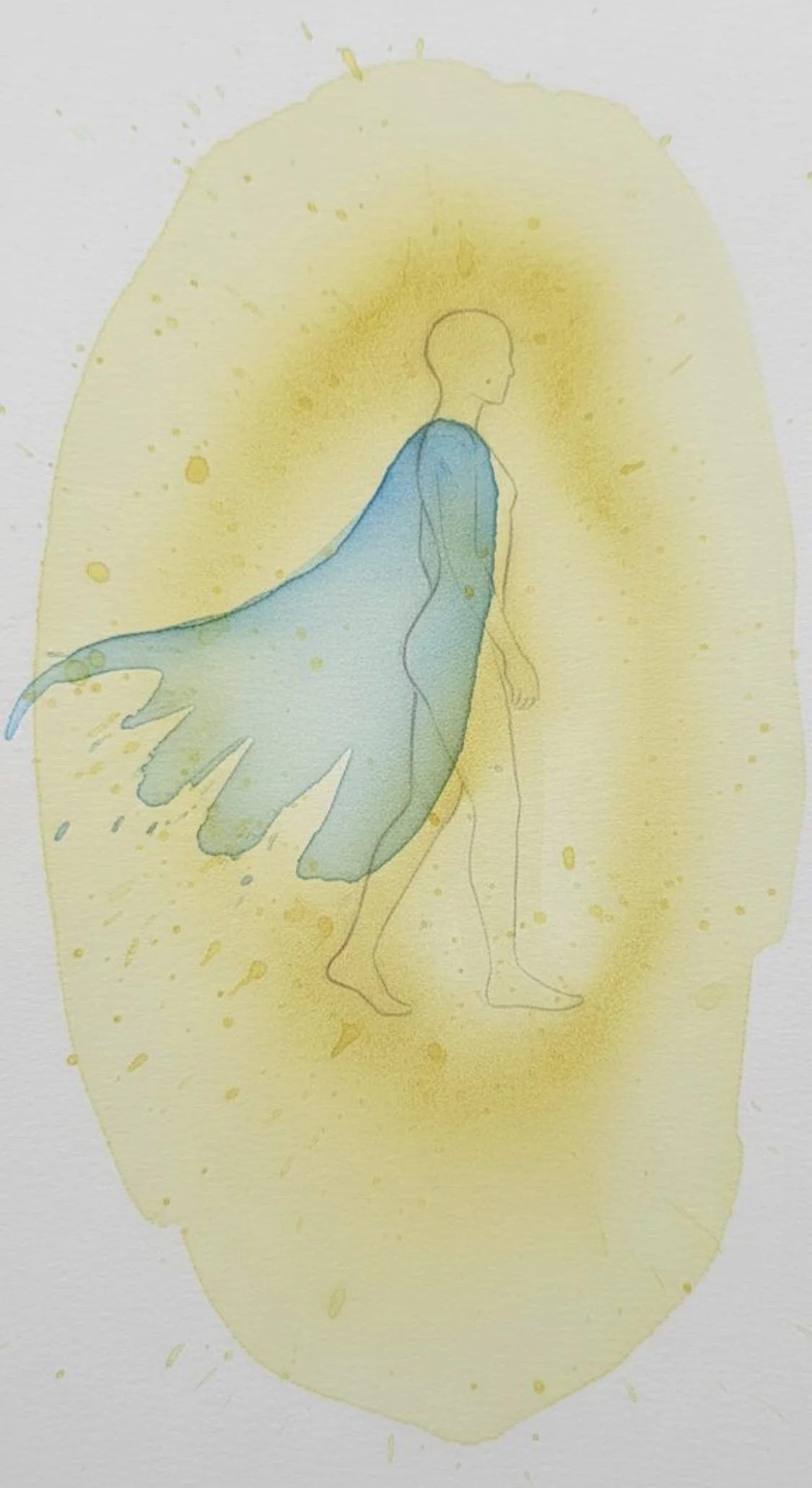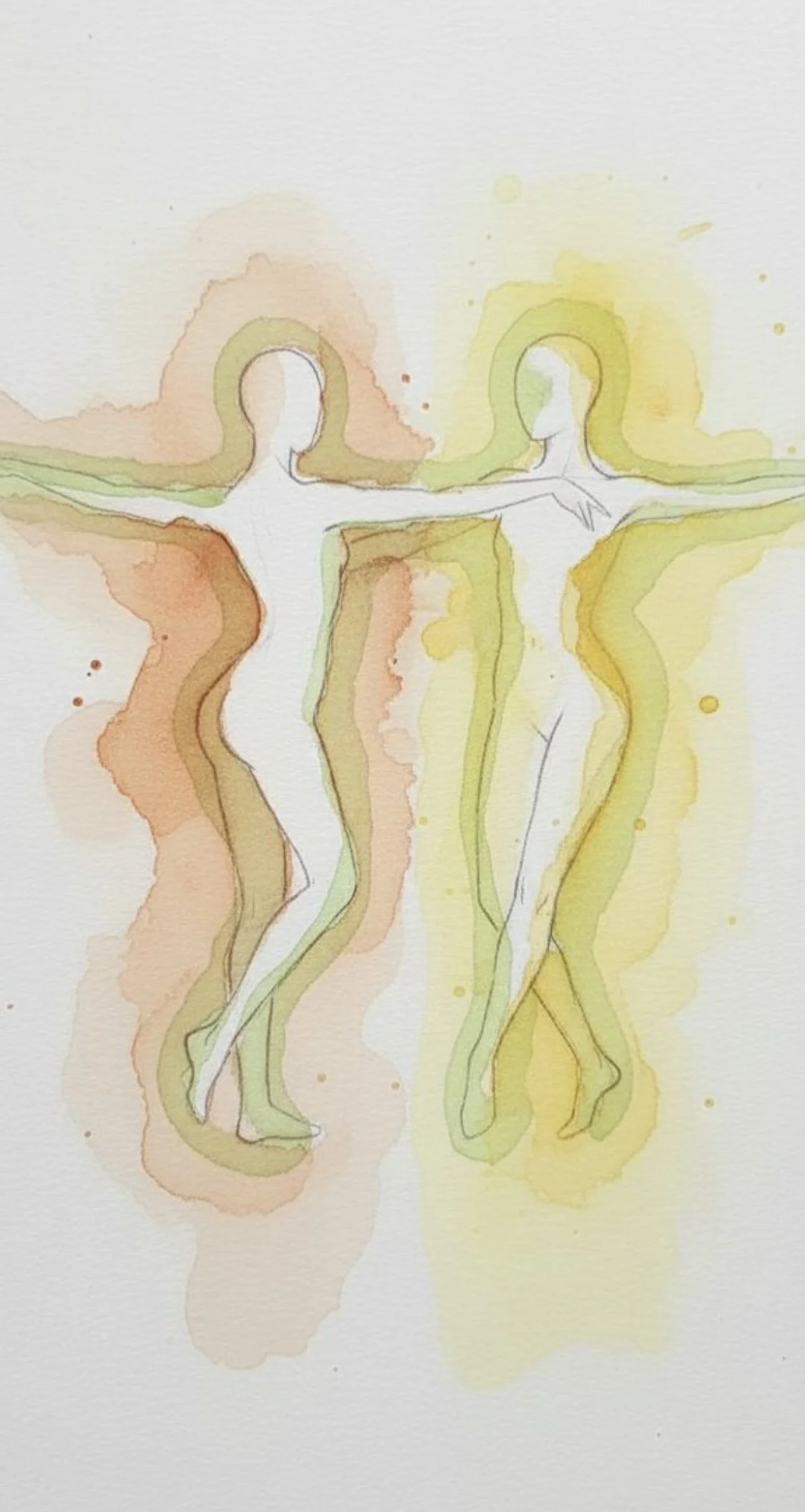Space Around the Body and Our Health
This article is about awareness of space that surrounds the body and how it can positively impact your health. Several exercises are provided to practice.
"Creating space is the predecessor to creating anything. Whether it's physical, mental, emotional, spiritual, etherical or temporal space, we can't be creative without it." Allison Armstrong
At a recent meditation retreat hosted by Joe Dispenza, a doctor, author and teacher who helps people learn to transform through awareness and meditation, I rediscovered how important it is to pay attention to our body vibration and nervous system. Many things impact the vibration which relates to our health and how we experience life. One way we can positively affect it is through our awareness of space around the body. Having studied Spacial Dynamics® for 14 years and using it in my energy healing, dance and coaching practice, I immediately saw the value of sharing the spacial awareness exercises below. I hope these descriptions and practices are useful.
There is a space around the body that is created by the vibration of the cells and tissues. Energetic charges exist in cells and tissues that emit a vibrational frequency which have been scientifically measured outside of the body. When there is an orderliness or synchronicity in the vibrations of the body, we are calm, focused, efficient and better able to learn as well as support our health. This orderliness can be impacted through our intention and awareness.
Although our focus in this blog is on measuring our results by our awareness of how we feel before and after the exercises, organizations like Heartmath Institute use scientific instrumentation to measure vibrations of the body and synchronization and call it coherence. They and Dr Joe Dispenza have published studies showing positive impact of thought, focus and meditation on coherence. They are a great resource should you want to learn more about vibration and increasing health. They also study coherence of global communities, the earth and nature. Note that other methods to positively impact our nervous system are described in "Essence Pace and How it can Support You", "Breathing to Regulate Stress" and "Fear Melt: A Great Way to Decrease Sress and Downregulate the Nervous System". Also, meditation practices, being in nature, healthy eating and supportive social support all can have a positive effect on our nervous system.
Preparation and Introduction for Exercises
Preparation and Introduction: Before practicing the exercises below, consider the concept of play. Invite your mind to be open. Also, watch for internal voices that might push away the information such as “I already know this,” and “it does not work”, or “this won’t work for me." Give yourself a chance to just explore. Playful open exploration supports more neuroplasticity and is a good way to learn and initiate new brain activity.
Our standard way of thinking is to do what we have always done and operate in a familiar pattern. This is because the brain is wired for survival, which means it will do what it has done or learned in the past to survive. In addition, it avoids trying anything new because its goal is to conserve energy to survive.
That is why when you play or relax, the brain more easily accepts change. During play or deep rest, it is more likely to perceive that everything is okay, so the brain and nervous system accept messages and new ideas more efficiently.
Also, it is good to set an intention before starting the spacial exercise. Intentions are powerful and can greatly impact our results. The intention might be one you create or one of the following:
experience more calm
be more present with intuition
engage more closely with higher forces of love and divinity
be more connected to health
have more clear thinking
engage in healthier body posture
have more positive impact on others
To measure your results, rate your state of tension from zero (none) to 10 (very high) before and after doing each spacial exercise, to provide your brain and intellect with numerical results. This can help your brain be motivated to repeat the practice, especially when results are positive.
The first step toward positively impacting your health through spacial awareness is by noticing the space. Once you can notice the space through imagination, you can then imagine colors or temperature to help develop more awareness. You can later develop spacial awareness around yourself and others to help create objectivity and thoughtfulness. Noticing and paying attention can change the vibration and bring it into a more rhythmical state.
Noticing the back space, the space behind your body, will also often help you feel more calm, present as well as help people feel more comfortable around you. It is a way of creating space for yourself and others. This is a good practice when you are meeting someone new, trying to support someone who might be shy or hesitant--it can assure them that you want to support them and their space. It is a great way to soften your presence with people when needed. For example, a teenage daughter will appreciate this, or a new person you want to know better who is highly sensitive or empathic. Animals can sense space also so this can be a good way to communicate with them.
So much of our interaction in the world is through the body, not just the brain. The body sends signals to the brain through neural pathways so body awareness can also impact your thoughts and actions.
The exercises below can be done while laying down or sitting. They can be done for a minute or two or much longer such as during a meditation, before going to bed, when walking, or in any situation where you can make time. Do not do them while operating a motor vehicle. To deepen your experience, make notes of how you feel before and after the exercises.
Exercises
1. Spacial Awareness
a. Imagine a space, about an arm’s length out but any distance that is comfortable is fine, around your body. What do you notice? Does paying attention to the space around your body affect how your body feels at all? Feelings are vibrational movement of cells emitting electromagnetic frequencies and chemicals such as hormones. So, they can be a measure of our health, and we can affect them through our thoughts and practices. For example, relaxation and calming can help them be more synchronized and allow us to notice aspects of what the body might need that may have been missed or blocked out previously before paying attention.
b. Imagine filling the space with a color. Notice what colors want to be around the body. Are there any areas that have different colors. Notice how your body feels as you imagine a colored space around it. Breath in and imagine allowing the space around you to expand as your chest fills with air and gently and slightly contract when you breath out and release air. Try this for a minute and see how you feel afterward.
c. As you breath imagine the space around you is a watery fluid holding you. Or sunlight filled air, whichever image draws you more into the exercise. Allow the space to be filled with water or warm light to hold you while you breath, and practice this for a minute. Allow your back to arch gently and chest to open as you breath. Allow the breath to go all the way into your belly.
“As you breath imagine the space around you is a watery fluid holding you. Or sunlight filled air, whichever image draws you more into the exercise”
2. Back space and spacial awareness
a. Imagine the space around the body and pay attention to the space behind you. This is called the back space. Most people focus on forward movement with less attention on the back space; so, experiencing the back space with added awareness can feel new. Imagine allowing your breath to fill the space. You can also imagine a color or temperature filling the back space to amplify your experience. Allow your experience of the backspace to gently draw you toward it and see how that feels. You may feel more balance. Imagine you are wearing a cape that spirals backward behind you. Curves and spiral shapes can bring more uprightness to the body than a simple straight line.
“…….pay attention to the space behind you. This is called the back space.”
“Allow your experience of the backspace to gently draw you toward it and see how that feels. You may feel more balance. Imagine you are wearing a cape that spirals backward behind you. Curves and spiral shapes can bring more uprightness to the body than a simple straight line. “
b. Stand with your back against the wall. Let your head and back touch the wall gently. Notice if this brings your eye gaze upward a bit. Keep this posture and slowly step forward gently with this position. Notice what it’s like to take gentle steps forward with the uprightness created by standing with your back to the wall.
Many of us look down at computers etc. We also lean forward and focus on moving ahead. The back space practices can help remedy the forward leaning gesture encouraged by the modern lifestyle. This can also help remedy the curved postural bump on the back of the neck from aging.
3. Gently walking being “drawn” by the space
Imagine the space around your body as you are about to walk,. Experience it moving first before you take a step and guiding and holding you. Notice what this is like. Then imagine the space moving and drawing your body gently forward toward taking one step and then another. Take several steps and see what this is like.
7. Dancing with spacial awareness
When dancing, imagining the space around you can be a great practice. For even just one song, imagine the space around you, play a piece of music, and let the space guide you.
8. Partner dancing with spacial awareness
When dancing with a partner, it can be helpful to notice four different spaces: the space around you, your partner, the space created between the two of you, and the shared space around both of you. Start with the space around you and then explore paying attention to each one at different times. Notice what is different during each of these moments of focus. This practice can be communicated with your partner or just explored on your own.
When dancing with a partner, it can be helpful to notice four different spaces: the space around you, your partner, the space created between the two of you, and the shared space around both of you.
Start with the space around you and then explore paying attention to each one at different times. Notice what is different during each of these moments of focus.
Paying attention to the space around the body can greatly affect our health by expanding our awareness. We can support mechanics, relaxation, nervous system, brain, chemistry, experiences, and health. Through practice we can strengthen our presence, intention and effectiveness. Feel free to reach out for more instruction or guidance if you have any questions.
When writing and asking permission to quote Alison Armstrong above, she generously supported sharing the quote in this article and shared information about a program next month that describes how creating enough space is the source of magical moments “Alison will thoroughly teach one Extraordinary Choice ~ called "Enough SPACE" ~ that's at the source of all kinds of Magical Moments!” It is a training to support more joy, ease, and love in our lives through the attention to extraordinary choices including space! Her work is excellent and highly recommended.
Shay Marie is a Writer and Coach. Writing, learning, growing and supporting others is her passion: and in particular, the dance between nature, awareness and our growth. Please reach out for feedback or questions or support. Thank you to Jaimen McMillan for his development and training of Spacial Dynamics® and Maia McCluskey artist of original drawn images.




